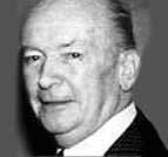| Biography of Bernard Villemot (1911-1989) |
|

|
Bernard Villemot, considered one of the last great poster artists, is well known for his poster campaigns with Air France, The Red Cross, Orangina, Perrier, and Bally Shoes. His style is characterized by his bold use of color, simple flowing lines, and bold, often repetitive, shapes. His posters are instantly recognizable and are widely popular.
Born within a stones throw of Paris, Bernard Villemot was brought up in a time of rapidly changing artistic climates. The German Bauhaus School and Dutch De Stijl movements, frequently characterized by simple forms, were very influential and made it possible for Villemot to begin his career in a modernist style. Villemot's father, Jean Villemot, was a well-known Parisian caricature artist, and exposed his son to the arts from an early age. Jean Villemot was well connected in the arts community, and had friends that included Tristan Bernard, Paul Morand, and Coco Chanel.
Bernard Villemot found that he had a strong attraction to design, and by the age of 16 sold and published his first work in Ric et Rac (A family magazine with a cartoon format); this gave him the capital to buy his own brushes and gouache. After his parent's divorce Villemot's Grandmother took charge of his education, and by the age of 19, he had his first poster show at a charity ball at l'Hotel du Golf a Deauville.
Paul Colin, Bernard Villemot's most noted teacher from Paris, was a famous poster artist in his own right. Colin was a student of Art Deco and made posters, costumes, and sets for theatre. His posters featured many seductive female forms, and most likely contributed to Villemot's interest with the female form in many of his poster series.
A favorite saying of Villemot's was "Une bonne affiche, c'est une telegrame." Simply, "A good poster is a telegram." He believed that a poster should be simple and tempting, and with his use of vivid color, and striking compositions he won himself great recognition around the world. Bernard Villemot's posters have shown in both the Gallery of Beaux Arts, and the Museum of Decorative Arts in Paris. |
|
|